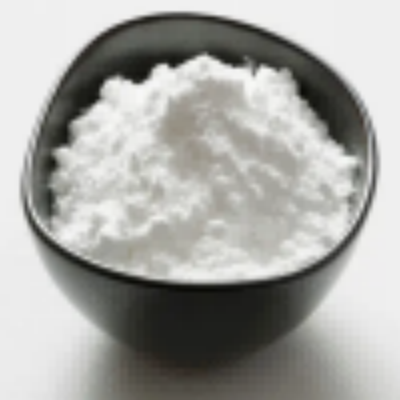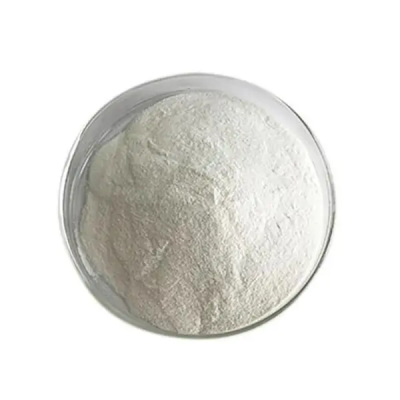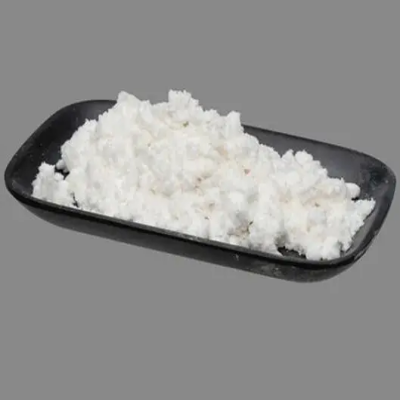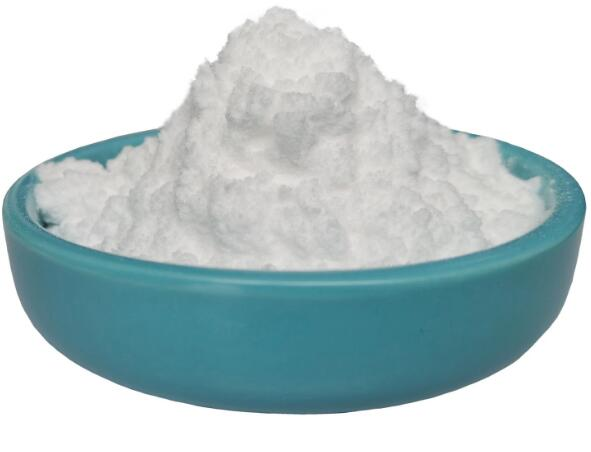(2R,3S)-2-[(1R)-1-[3,5-Bis(trifluoromethyl)phenyl]ethoxy]-3-(4-fluorophenyl)morpholine 4-methylbenzenesulfonate CAS:200000-59-5
The compound's systematic name reveals key structural components: Chirality: It is a chiral molecule with two stereocenters, denoted as (2R,3S). Morpholine Ring: Contains a morpholine ring system, a common motif in pharmaceutical compounds due to its stability and pharmacokinetic properties. Substituents: Includes a 4-fluorophenyl group and a 3,5-bis(trifluoromethyl)phenyl group attached to the morpholine ring via an ether linkage. Counterion: It exists in the form of a 4-methylbenzenesulfonate salt, providing stability and solubility enhancements in aqueous environments. Pharmacological Significance This compound likely exhibits pharmacological activity due to the following reasons: Target Specificity: The presence of aromatic rings and fluorine atoms enhances binding affinity to biological targets. Stereochemistry: Chirality impacts the molecule's interaction with biological receptors, potentially influencing potency and selectivity. Functional Groups: Ether and sulfonate moieties contribute to the compound's solubility and metabolic stability, crucial for drug development. Applications in Medicinal Chemistry In medicinal chemistry, morpholine derivatives like this compound are investigated for various therapeutic applications: Anticancer Potential: Compounds with similar structures have shown promising results as anticancer agents by inhibiting specific cellular pathways. Antimicrobial Activity: Morpholine derivatives possess antimicrobial properties, making them candidates for novel antibiotics. Neurological Disorders: Some morpholine derivatives exhibit activity in neurological disorders by modulating neurotransmitter systems or receptors. Conclusion In conclusion, (2R,3S)-2-[(1R)-1-[3,5-Bis(trifluoromethyl)phenyl]ethoxy]-3-(4-fluorophenyl)morpholine 4-methylbenzenesulfonate represents a structurally intricate compound with potential pharmacological applications. Its unique molecular architecture and chiral centers make it a valuable candidate for further research in drug discovery and development, particularly in the fields of oncology, antimicrobial therapy, and neurological treatments. Understanding its synthesis, structure-activity relationships, and biological mechanisms could pave the way for future therapeutic innovations.



| Composition | C27H26F7NO5S |
| Assay | 99% |
| Appearance | white powder |
| CAS No. | 200000-59-5 |
| Packing | Small and bulk |
| Shelf Life | 2 years |
| Storage | Store in cool and dry area |
| Certification | ISO. |


![(2R,3S)-2-[(1R)-1-[3,5-Bis(trifluoromethyl)phenyl]ethoxy]-3-(4-fluorophenyl)morpholine 4-methylbenzenesulfonate CAS:200000-59-5 Featured Image](https://cdn.globalso.com/xindaobiotech/8NS8DBIRAVXN0VCLT235.png)
![(2R,3S)-2-[(1R)-1-[3,5-Bis(trifluoromethyl)phenyl]ethoxy]-3-(4-fluorophenyl)morpholine 4-methylbenzenesulfonate CAS:200000-59-5](https://cdn.globalso.com/xindaobiotech/8NS8DBIRAVXN0VCLT235-300x300.png)
![2,4-dihydro-4-[(4-(4-hydroxyphenyl)-1-piperazinyl)phenyl]-2-(1-methylpropyl)-3H-1,2,4-triazole-3-one CAS:106461-41-0](https://cdn.globalso.com/xindaobiotech/629P2CZ3TH9SERL21ONG60.png)




